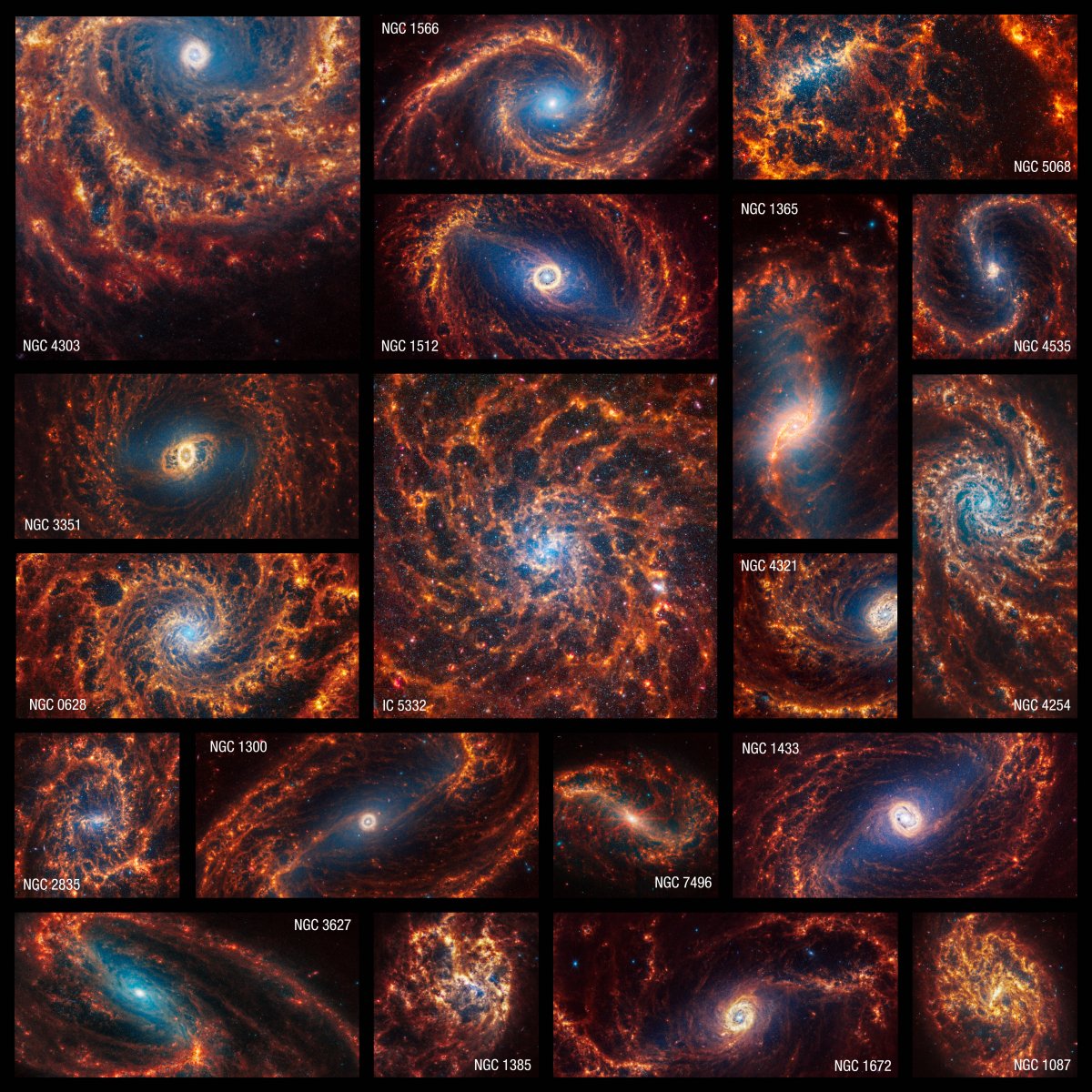A research collaboration has released 19 stunning images of spiral galaxies taken by the James Webb Space Telescope. In the top view, these images show not only the distribution of stars, but also the material from which they are formed.
advertisement
The images were taken in near and mid-infrared light, which is why they differ so much from other images taken by the Hubble Space Telescope, for example. The new images are also overwhelming for researchers who have been studying galaxies for decades, explains Janice Lee of the Space Telescope Science Institute (STScI). Interstellar dust in other galaxies has never been seen in such detail before.
Like those who participated in creating the images explains the Max Planck Institute for Astronomy (MPIA).The tools NIRCam and MIRI were used for this purpose. The near-infrared camera recorded light from millions of stars in different shades of blue, some well distributed and others appearing close together. The mid-infrared instrument, in turn, shows the interstellar dust closely surrounding those currently forming. These areas can be seen in images as bright red beads. The camera's filter wheel, developed in Oberkochen, in Swabia, also contributes to the recordings.
only on The images are now available to the public The space telescope also detects large spherical holes in the gas and dust. Astronomer Adam Leroy of Ohio State University says this is likely due to one or more stars exploding and tearing apart these cavities. Eric Rosolowski of the University of Alberta points out broad areas of red and orange at the ends of the spiral arms. These structures would follow the same patterns in galaxies and reveal something about the distribution of gas and dust. Exploring them could help understand star formation on a large scale.
Overall, there are “almost endless questions” that can be answered with data from the PHANGS (Physics of High Angular Resolution in Nearby Galaxies) collaboration, MPIA explains. However, the sheer amount of data published with the images far exceeds what the team can evaluate. That's why it was released to astronomers around the world. They must be able to discover how galaxies create, maintain, and block stars. Gorgeous images of spiral galaxies aim to show us once again how the James Webb Space Telescope is changing our view of the universe.
Exceeded all expectations
The James Webb Space Telescope is operated by space agencies NASA, the European Space Agency and the Canadian Space Agency and was launched on December 25, 2021. After unraveling itself in a complex procedure, it reached the L2 Lagrange point a month later. Here it looks into space far away from the Sun, Earth and Moon, so that its thermal radiation does not disturb the infrared telescope. A huge protective screen prevents this. Since it began scientific work at the beginning of July 2022, it has been making discoveries at a tremendous pace. At the same time, it should remain operational for much longer than originally planned.
(meh)

“Subtly charming coffee scholar. General zombie junkie. Introvert. Alcohol nerd. Travel lover. Twitter specialist. Freelance student.”







More Stories
iPad Games: Emulator Delta is coming – and Fortnite in the EU
STRONG AND ROUGH: Vintage watches are very fashionable
Intel Core Ultra 200V (“Lunar Lake”) with Xe²-LPG (“Battlemage”) in benchmark testing for the first time